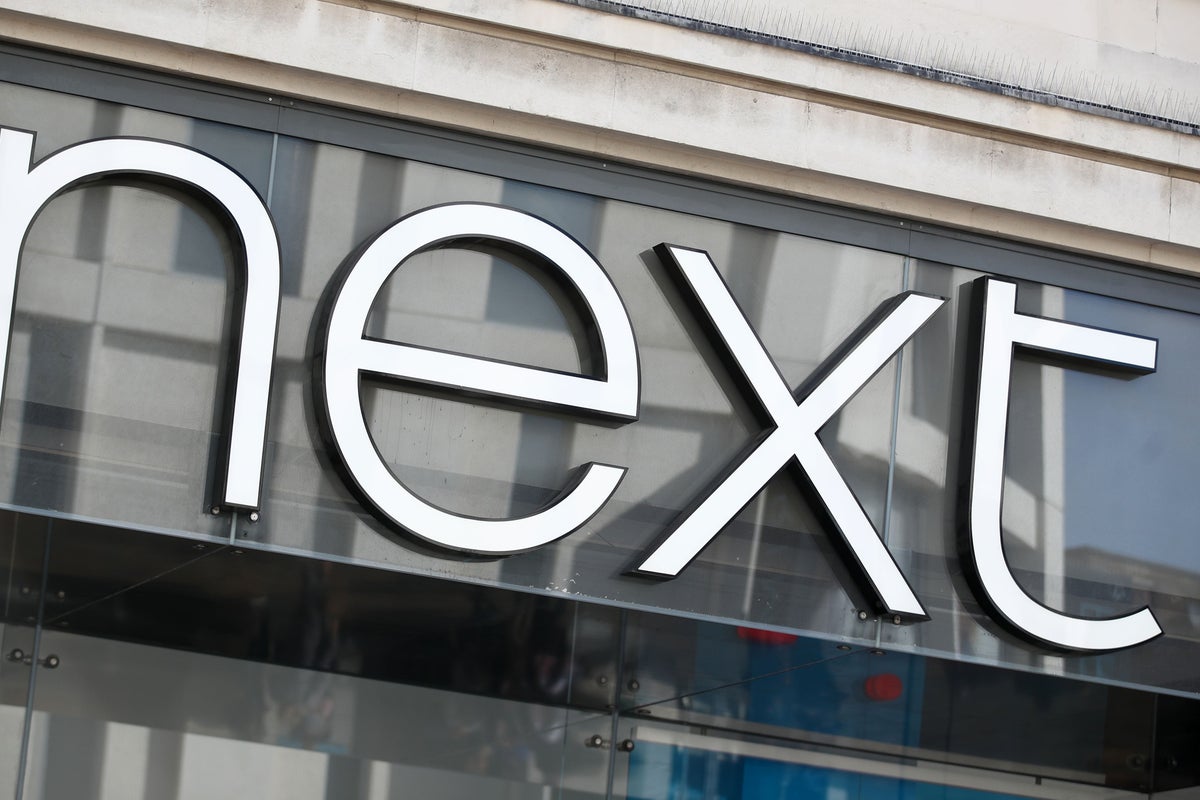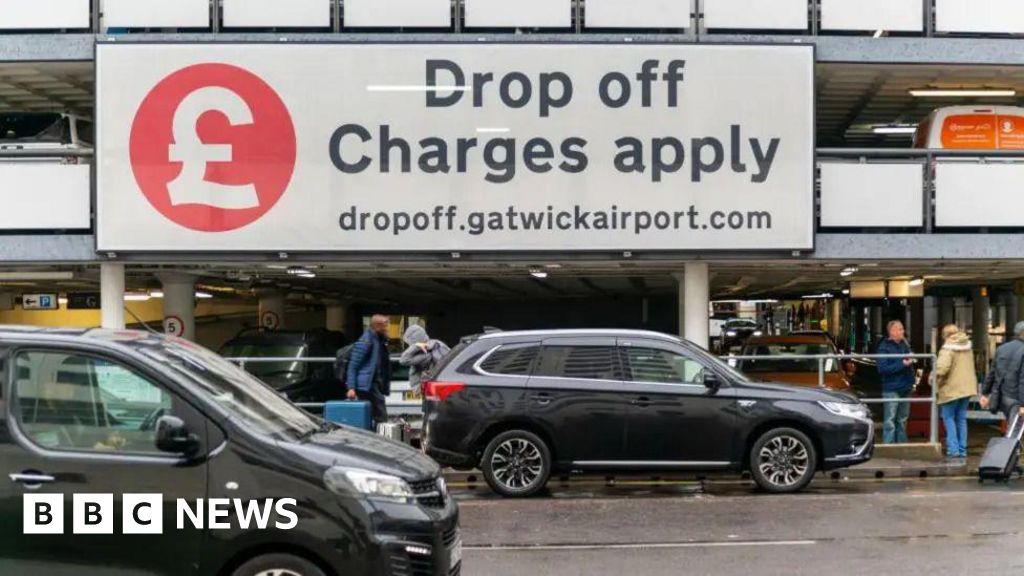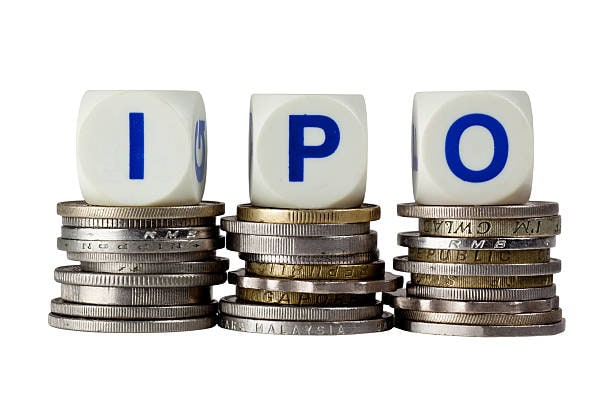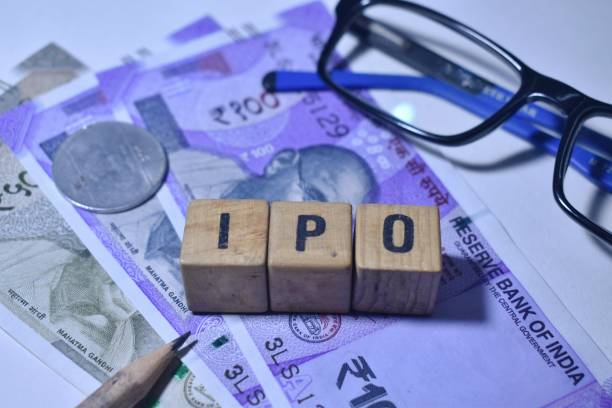Business
Next expected to reveal sales momentum despite consumer pressure

Next is expected to report further growth for the past quarter as the high street chain continues to shrug off the squeeze on consumer finances.
Shares in the company lifted on Friday to a new record high as investors continue to buy into the group.
The company has been a consistent bright spot across the retail sector in recent years, posting robust trading despite cost-of-living pressures and higher operating costs.
The fashion retailer, which runs 899 stores, is set to report on its trading for the past three months on Wednesday October 29.
It is expected to show continued sales growth although this could see a slowdown compared with the first half of the financial year.
In an update last month, bosses at Next said full price sales are on track to grow by 4.5% over the half-year to January 2026, compared with a year earlier.
It comes after the company said full price sales grew by 10.9% in the half-year to July, with total sales up 10.3%.
The projected slowdown in growth came as chief executive and Conservative peer Lord Simon Wolfson indicated that consumer sentiment was cooling in the face of economic uncertainty and rising unemployment.
“The medium to long-term outlook for the UK economy does not look favourable,” he said in September.
“To be clear, we do not believe the UK economy is approaching a cliff edge. At best we expect anaemic growth.”
However, industry data has pointed to resilient recent retail sales despite this.
Next shares were boosted by data from the Office for National Statistics (ONS) which showed that retail sales volumes grew by 0.5% in September.
It came despite analysts predicting a decline for the month and marked the fourth consecutive month of growth.
Investors will therefore be hopeful that this points to resilient consumer spending habits.
Michael Hewson at MCH Market Insights said: “We’ve seen another decent quarter for Next shareholders with the share price posting a new record high this month, despite concerns over a continued squeeze on consumer incomes.
“When Next reported back at the end of July there was some scepticism that the retailer would be able to carry on its recent trend of raising its guidance that has been the hallmark of a lot of its recent trading numbers.”
Business
Gatwick Airport’s drop-off fee rises to £10

Gatwick Airport is increasing the price of its drop-off zones by £3, bringing the minimum charge to £10.
The fee to allow drivers to stop outside the terminal for 10 minutes is to increase on 6 January.
The airport said the increase was “not a decision we have taken lightly” and blamed “a number of increasing costs, including a more than doubling of our business rates”.
Rod Dennis, RAC senior policy officer, said: “The words ‘Happy New Year’ are unlikely to be uttered by drivers dropping off friends and family at Gatwick in January.”
He added: “A more than 40% increase in the cost to drop-off is the largest we’ve ever seen and represents a doubling of the fee since it first came in.”
Southend Airport charges £7 for drop-off of up to five minutes, but that increases to £15 for between five and thirty minutes.
A drop-off fee of £5 was introduced at Gatwick in March 2021.
That increased to £6 in 2024, with the cost rising again to £7 in May.
A Gatwick spokesperson said: “This increase in the drop-off charge is not a decision we have taken lightly, however, we are facing a number of increasing costs, including a more than doubling of our business rates.
“The increase in the drop-off charge will support wider efforts to encourage greater use of public transport, helping limit the number of cars and reduce congestion at the entrance to our terminals, alongside funding a number of sustainable transport initiatives.”
They added that passengers can be dropped off without charge in long-stay car parks and catch a free shuttle bus to terminals.
Blue Badge holders remain exempt from the charge.
A government spokesperson said: “Airports are responsible for setting their own parking terms but must follow consumer law and justify their charges.
“We’re delivering a £4.3bn support package to cap business rates bill increases at 30% before other reliefs for the largest properties, including airports.
“Without intervention those would be up to 500%.”
Drop-off fees are also rising at Heathrow from 1 January from £6 to £7.
London City, the UK’s last major airport without a drop-off fee, is to introduce one later this month.
Out of mainland Europe’s biggest 10 airports, only one, Schiphol in Amsterdam, charges to drop-off, according to RAC research.
Business
Homeowners are losing thousands in equity thanks to weakening prices

A tract of new tightly packed homes are viewed along the Boulder City Parkway on January 11, 2022 in Henderson, Nevada.
George Rose | Getty Images
Home values have been losing ground for much of this year, with previously huge annual gains shrinking to nothing. The result is that homeowners are losing equity.
Borrower equity fell 2.1% in the third quarter of this year compared with the same period a year ago, or a collective $373.8 billion, according to a report from Cotality. This comes after years of steep home prices gains and record equity. Even after the drop, homeowners still have an overall collective net equity of $17.1 trillion for homes with a mortgage.
For the average homeowner, the third-quarter equity declines translate to a loss of $13,400. In addition, the number of homes in a negative equity position, meaning they are worth less than the mortgage on them, increased by 21% from a year ago to 1.2 million.
“As the pace of home price growth slows and markets recalibrate from pandemic peaks, we’re seeing a clear shift in equity trends,” said Selma Hepp, chief economist at Cotality. “Negative equity is on the rise, driven in part by affordability challenges that have led many first-time and lower-income buyers to over-leverage through piggyback loans or minimal down payments.”
Those in a negative equity position likely purchased their homes more recently, when mortgage rates were higher and prices had peaked. Homeowners have also been pulling more equity out of their homes, thanks to huge gains in the last five years.
Home values are now roughly 52% higher than they were in January 2020, according to the S&P Cotality Case-Shiller national home price index. Even after mortgage rates increased in 2023, the average equity gain per homeowner was $25,000. In 2024, it was $4,900.
Not every market, however, is seeing the same dynamic. Boston, Chicago and New York City are all still in the positive, according to the Cotality report. The biggest losses were in Los Angeles, San Francisco, Washington, D.C., Miami and Houston, Texas.
“The future performance of highly leveraged loans will hinge on the strength of the U.S. economy and labor market. Even as expectations for continued price appreciation and economic resilience persist, it remains critical to closely monitor these loans in the months ahead,” Hepp said.
Business
IPO Explained: Meaning, Process, Benefits, Risks

In the world of finance, few events generate as much excitement as an Initial Public Offering (IPO). For companies, it marks the transition from private ownership to public trading. For investors, it opens the door to participate in the growth of a business from an early stage. IPOs are often seen as milestones that signal a company’s maturity, ambition, and readiness to expand. (Image: Pexels)

An Initial Public Offering (IPO) is the process by which a private company offers its shares to the public for the first time. By listing on a stock exchange, the company transitions into a publicly traded entity. This move allows the firm to raise capital, expand its operations, and gives early investors and employees the opportunity to sell their shares. For the wider public, it opens up a chance to own a stake in the company and participate in its growth journey. (Image: Pexels)

Companies choose to launch IPOs for several reasons. The most obvious is capital raising, as funds generated from the sale of shares can be used to expand operations, invest in new technology, or reduce debt. Going public also enhances visibility and credibility, since listed companies must adhere to strict disclosure norms. For founders, venture capitalists, and employees, an IPO provides liquidity, enabling them to monetize their holdings. Moreover, access to capital markets creates opportunities for mergers, acquisitions, and global expansion. (Image: Pexels)

The IPO process itself is structured and involves multiple steps. It begins with the company’s board and management deciding to go public. Investment banks, known as underwriters, are then appointed to manage the offering, set the price, and market the shares. (Image: Pexels)

The company must file regulatory documents; in India, this is the Draft Red Herring Prospectus (DRHP) with SEBI, while in the US it is filed with the SEC. These filings disclose financials, risks, and business plans to potential investors. To generate interest, the company and its bankers conduct roadshows, presenting the IPO to institutional investors. (Image: Pexels)

Based on demand, the final price of shares is determined, and allocations are made to both institutional and retail investors. Finally, the shares are listed on exchanges such as NSE, BSE, or NYSE, where they can be freely traded. (Image: Pexels)

There are two main types of IPOs. In a fixed price issue, the company sets a predetermined price for its shares before the offering. In a book building issue, investors bid within a specified price range, and the final price is decided based on demand. Both methods aim to balance investor interest with the company’s capital requirements. (Image: Pexels)

Investing in IPOs can be rewarding but also carries risks. On the positive side, early investment in a promising company can yield significant returns, and IPOs diversify the opportunities available to investors. However, risks include market volatility, overvaluation, or poor company performance after listing. Not every IPO guarantees success, and careful research is essential before investing. (Image: Pexels)
-

 Sports1 week ago
Sports1 week agoAustralia take control of second Ashes Test | The Express Tribune
-

 Politics6 days ago
Politics6 days ago17 found dead in migrant vessel off Crete: coastguard
-

 Politics5 days ago
Politics5 days agoThailand launches air strikes against Cambodian military: army
-

 Entertainment1 week ago
Entertainment1 week agoSabrina Carpenter recalls ‘unbelievable’ experience with pal Taylor Swift
-

 Politics1 week ago
Politics1 week agoGen-Z battles to gain political ground after ousting ex-PM Hasina in Bangladesh
-

 Fashion1 week ago
Fashion1 week agoBangladesh’s economic outlook cautiously optimistic: Govt
-

 Fashion5 days ago
Fashion5 days agoGermany’s LuxExperience appoints Francis Belin as new CEO of Mytheresa
-

 Tech7 days ago
Tech7 days agoWIRED Roundup: DOGE Isn’t Dead, Facebook Dating Is Real, and Amazon’s AI Ambitions






